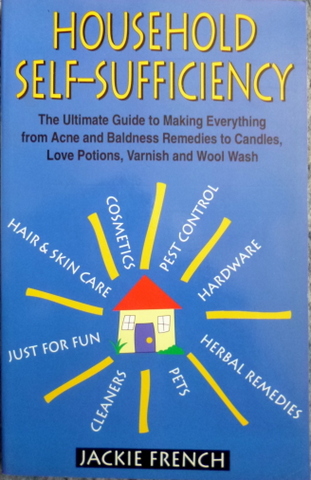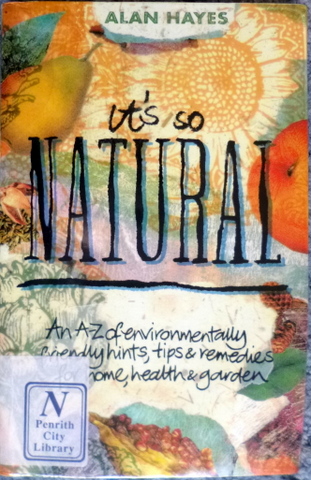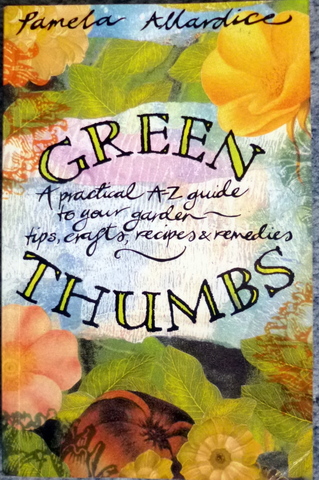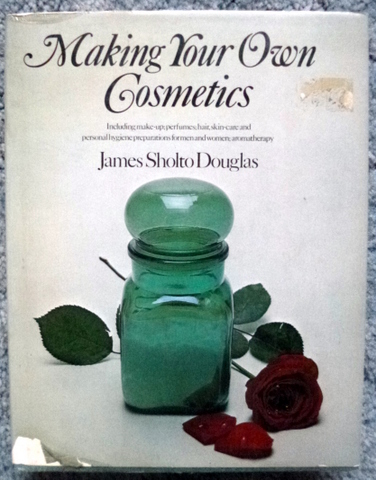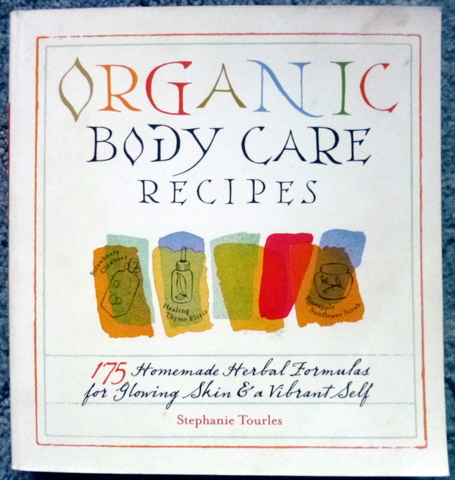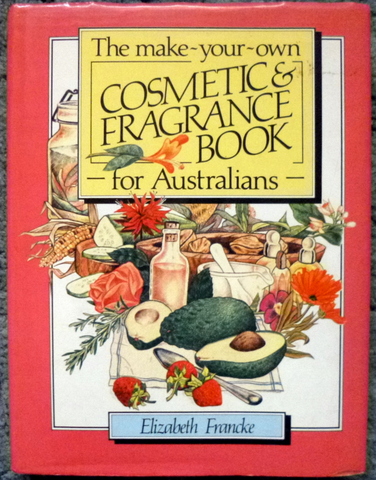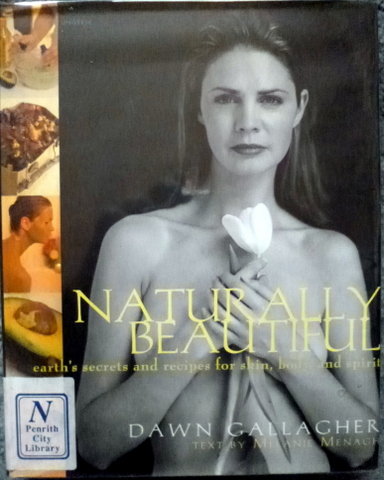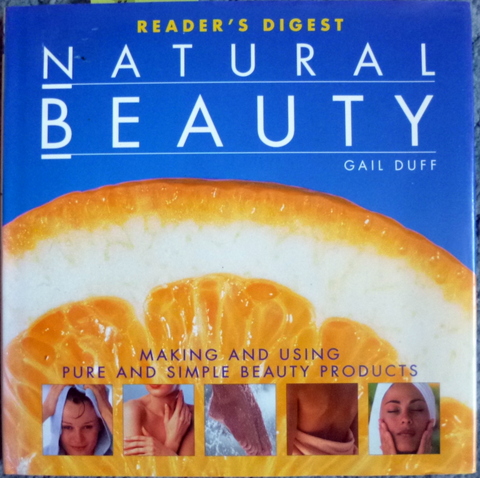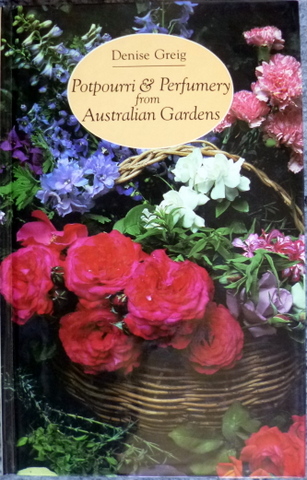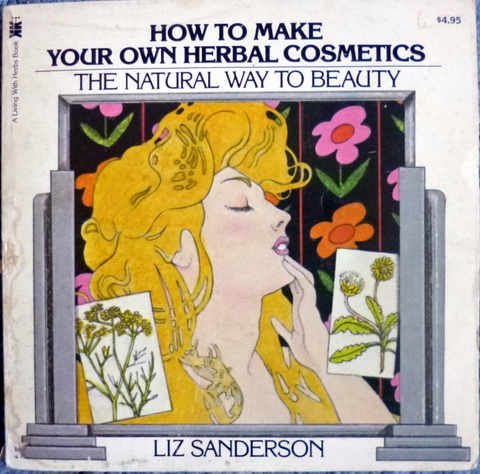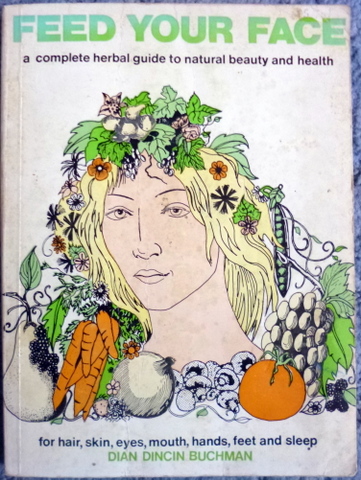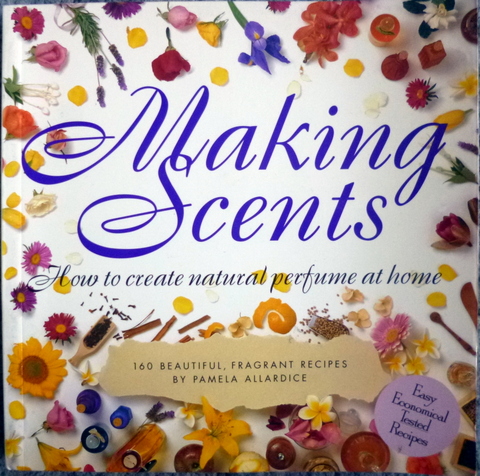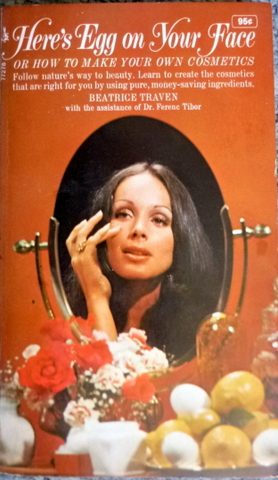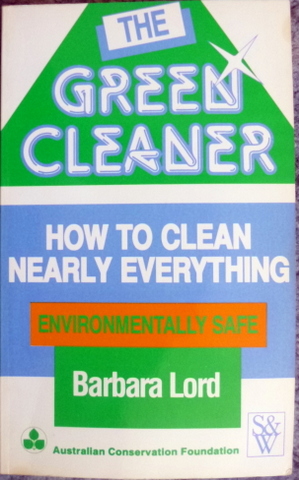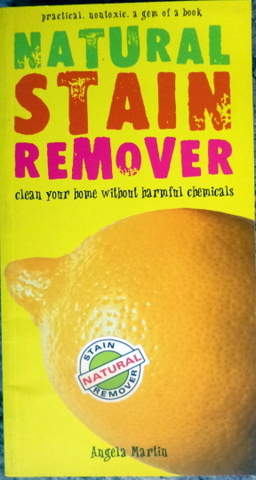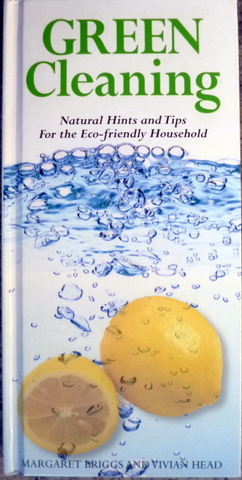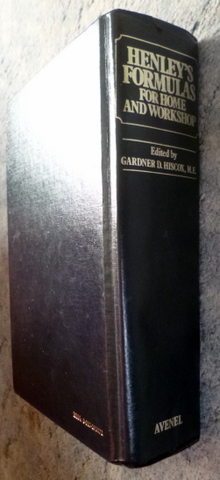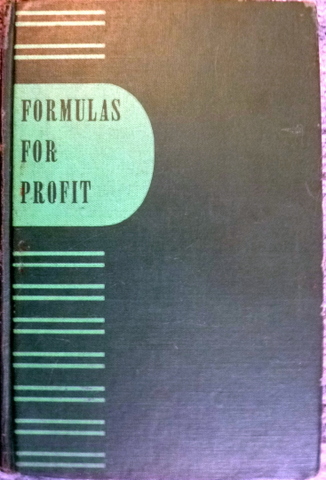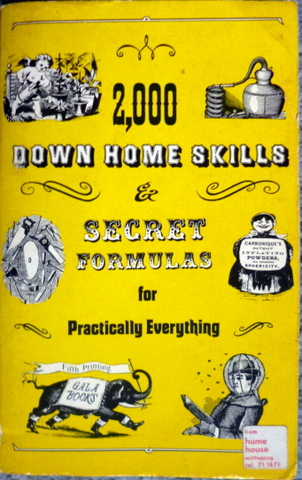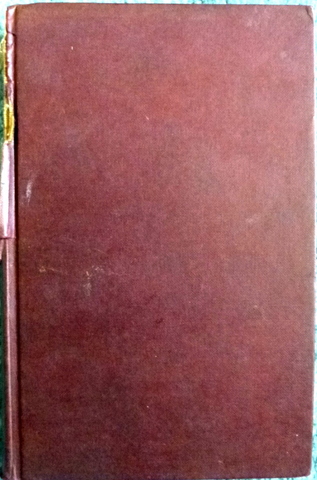Booklists on soap making, candle making and papermaking are available here.
General
Household Self-Sufficiency – Jackie French – Aird Books (AUS) 1994 ISBN 0 947214 42 9 – This is the companion volume to “Backyard Self-Sufficiency” by the same author. The first part of the book covers “Personal Wares” and includes recipes and techniques for herbal remedies, cosmetics and perfume, hair and skin care and a section on fun things like making beads, finger paints and incense as well as preserving flowers. The second section is “Household Wares” and covers recipes and techniques for cleaners, polishes and air freshener’s, dyeing and painting, household pest control and creative recycling. No illustrations. Anything by Jackie French is going to be good!
It’s So Natural – Alan Hayes – Bay Books (AUS) 1993 ISBN 1 86378 126 9 – This book is an A to Z of environmentally friendly hints, recipes and techniques covering a wide range of subjects from making a herbal bruise oil to making a garden fungicide from chamomile or your own hardy paint. There is a lot of information n the small book.
Green Thumbs – Pamela Allardice – Bay Books (AUS) 1994 ISBN 1 86378 180 3 – This book is similar to the above volume in that it is arranged alphabetically and covers a wide range of subject matter. The book has techniques and recipes for body oil, body powder, barrier cream, foot care products, herbal pillows, scented stationary and lots more.
Body care, Beauty and Cosmetics
Making Your Own Cosmetics – James Sholto Douglas – Pelham Books Ltd (UK) 1979 ISBN 0 7207 1042 1 – This book covers the history of beauty aids, producing natural oils and equipment required. The types of cosmetics covered includes Skin and eye care products, make-up and hair preparations, perfumes and fragrances, personal hygiene and some miscellaneous products such as shaving and baby preparations. There is a comprehensive list of suppliers but this applies to UK only and would be well out of date. It has a whole stack of formulations, mainly based on commercial chemical ingredients.
Organic Body Care Recipes – Stephanie Tourles – Storey Publishing (US) 2007 ISBN 978 1 58017 676 7 – The book starts with a section on the natural approach to beautiful skin, hair and nails then goes through the ingredients and equipment required to produce the recipes. The book then has a series of 1 per page recipes covering face care, treatments for the eyes and lips, body products, nails and hands, hair products, “women only” products and insect repellents. The formulas are based on natural ingredients and while some are complex, the instructions are comprehensive.
The Make-Your-Own Cosmetic & Fragrance Book for Australians – Elizabeth Franke – Doubleday Australia Ltd (AUS) 1982 ISBN 0 86824 063 X – This book, while containing some natural and plant based beauty product recipes, also covers exercise and beauty tips as well. She tells a number of beaty related storeis and anecdotes through the book. Chapters cover hair, skin (natural cosmetics and washes etc) limbs, bath oils and fragrances and the “last Cosmetic” (“Great beauty is a curse!”).
Naturally Beautiful (earths secrets and recipes for skin, body and spirit) – Dawn Gallagher – Universe Publishing (US) 1999 ISBN 0 7893 0353 1 – Lots of colour photos and glossy pages in this one! The book is divided up into 5 main sections – the face, the body, hair, hands and feet and beauty in balance. There is a discussion of how to treat and care for the particular area being covered, followed by a series of recipes and formulations suitable to be used on the area. There is also some advice and information on alternative health practices.
Reader’s Digest Natural Beauty – Gail Duff – Reader’s Digest (AUS) 1998 ISBN 0 86449 137 9 – This one is another “glossy”. The initial sections cover beauty from the inside and techniques for making the products. The products themselves are divided into face, hair, body, hands, feet with recipes in each section including how to make them and how to use them. There is also other DIY information like how to do a facila massage and how to make herbal bath bags.
Potpourri & Perfumery from Australian Gardens – Denise Grieg – Kangaroo Press (AUS) 1986 ISBN 0 86417 081 5 – This is a small book (80 pages) with an introductory section on equipment and techniques followed by a series of sections on potpourris and sachets, cosmetic and culinary vinegars, beauty baths, leas and liqueurs. There is also a section on lemons and 10 recipes for eating rose petals! There are two inserts of colour photos and few line drawings.
How to Make Your Own Herbal Cosmetics – Liz Sanderson – Keats Publishing Inc. (US) 1977 ISBN 0 87983 190 1 – The introduction covers obtaining ingredients and making your own herbal ingredients followed by a whole series of small sections with a few recipes each on subjects like face creams, mouth teeth and nose, freckles and blotches, the eyes and hair rinses and lotions etc. There are also hints on improving hair condition, slimming and dealing with pimples, spots and acne using herbs. Lots of line drawings and a section on ingredients.
Feed Your Face – Dian Dincin Buchman – Gerald Duckworth and Co. (UK) 1973 ISBN 0 7156 0717 0 – The introduction has a two page matrix on how to use herbs, followed by a chapter on skin covering how to deal with issues like dry skin, oil skin spots etc. and recipes for astringents, cosmetic vinegars and natural deodorants. The next chapter covers bathing, with the following chapters covering hair, eyes, mouth and teeth, hands feet and sleep respectively. The penultimate chapter covers making and using perfumes and the final chapter covers collecting and drying herbs. There are almost no illustrations.
Making Scents – Pamela Allardice – Margaret Gee Publishing (AUS) 1995 ISBN 1 875574 32 8 – An introduction covers the history of scent, followed by the first part of the book which is an A to Z of fragrances covering what the scent is like, which scents it blends with followed by a discussion of the plant from which it extracted and what the scent is used for. The second part of the book gives 160 recipes for homemade perfumes. There are a few line drawings with no other illustrations.
Here’s Egg on Your Face – Beatrice Traven – Pocket Books (US) 1970 ISBN 978 0 67177 278 9 – The first sections of this little paperback cover tricks of the trade, tools of the trade and preservatives. This is followed by a series of chapters on how to make the products themselves covering fragrance products, refreshers, treatments (beauty scrub, skin toner etc.), hair products, creams and lotions, specialty creams and make up. The last section covers recipes for base stocks and mother bases used to make the other products. There are no illustrations.
Cleaning
The Green Cleaner – Barbara Lord – Australian Conservation Foundation (AUS) 1989 ISBN 1 86344 006 2 – This small book has sections on making cleaners and cleaning techniques for the kitchen, floors, the bathroom, laundry and lounge room, jewellery, walls and windows. There is also a section on personal hygiene and garden safe insecticides.
Natural Stain Remover – Angela Martin – Lansdowne Publishing (AUS) 2002 ISBN 1 86302 821 8 – The book starts out with a discussion of the dangers of hazardous household products and why organic is better. The next section covers the basic techniques of stain removal and cleaning, followed by a section giving the recipes for the formulas, blends and treatments used in organic stain removal. The final section is an A to Z of stain removal and cleaning using the cleaners from the previous section. There are no illustrations.
Green Cleaning – Margaret Briggs and Vivian Head – Abbeydale Press (UK) 2008 ISBN 978 1 86147 260 1 – This book is basically a collection of tips, techniques and recipes for using four natural cleaners – Vinegar, bicarbonate of soda, lemons and salt. There is also a small section at the end about borax and tea tree oil.
Formularies
These are books of large numbers of formulas, some originally published many years ago, which give the details on how to make many products from basic chemicals. The older ones can reference products which would be dangerous to make or which some of the raw materials are unavailable today. They are certainly of historical interest and a great place to start if you want to make, or find what the components are of a particular product.
Henley’s Formulas for Home and Workshop – Gardner D. Hiscox – Avenel Books (US) 1979 (originally published 1907) ISBN 0 517 29307 2 – The book starts with a section on useful workshop and laboratory methods (and a warning to ignore all medical advice!) and then lists the formulas in alphabetical order. Some of the subjects covered include adhesives, beverages, cleaning preparations, cosmetics, dentifrices, dyes, glass, hair preparations, paints, photography, soap, varnish and welding powders. It’s a big book!
Formulas for Profit – H. Bennett (ed) – World Publishing Company (US) 1941 ISBN (No ISBN available) – I have found a number of these second hand so they must have been very popular at one time. Some of the formulas presented include adhesives, emulsions, farm and garden, food products, inks, leather skins and furs, lubricants, paints varnishes and lacquer, polishes and abrasives, pyrotechnics, rubber, resins and plastics, soap and textiles.
2000 Down Home Skills & Secret Formulas for Practically Everything – No author listed – Gala Books (US) 1971 (although it is a reprint of a much earlier title) ISBN 0 912448 04 0 – The book is divided into 7 “Departments”, each covering a different area of formulas. Departments covered are: the druggist; the chemist, toilet articles, the household, all trades (including ice cream, beverages, glues and cements, leather, the painter and decorator, and the farrier), farm and dairy, and general miscellany. There are a few line drawings which appear to be taken form old adverts.
The Chemical Formulary - H. Bennett (ed) - Chemical Publishing Company (US) (1933 – 1997) ISBN (Various) – The chemical formulary is like an encyclopaedia of how to make products, there were 34 parts published irregularly between 1933 and 1997 and they are still available. Some are available free in PDF form, particularly the earlier volumes. Products covered include adhesives, cements and ceramics, coatings, cosmetics, detergents, food, inks, metals and treatments, polish, rubber, plastics and waxes. The formulations quite often refer to proprietary products which would need to be tracked down. The set is a vast resource of chemical formulations and a great start if you are trying to track down a formulation for a specific product.



